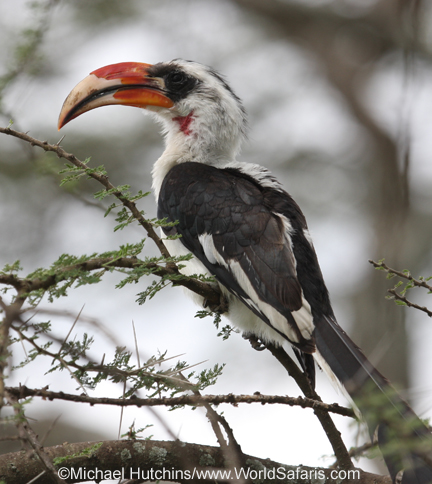
Many have heard about the famous “Birdman of Alcatraz”, the prisoner who kept birds in his cell and became an expert on all things avian. But have you heard about the bird that “imprisons” its mate? Hornbills are one of my favorite birds and much of their appeal has to do with their incredible breeding biology. There are many species of hornbills inhabiting Asia and Africa. Early in the breeding cycle, the male courts the female by feeding her. This ritualized behavior is not meant to be symbolic, but rather is a test for a more important task. Once the bond between them has been established, the pair seeks an appropriate nesting site, typically a tree-hole cavity. After mating, the female goes inside the cavity and the male proceeds to close the hole with mud, using a sideways pounding motion of his long bill. Eventually, the mud hardens and all that remains is a narrow slit through which the male can feed the female and their chicks, a task which he performs regularly for several weeks until the chicks fledge. The wall is then broken down and the female and chicks emerge.
This incredible behavior is thought to be an anti-predator strategy. Also supporting this hypothesis is the behavior of the male while approaching the nest. He doesn’t fly straight there. Instead, he often lands in adjacent trees and surveys the area to make sure that no predators are around before proceeding to the nest cavity. I’ve seen hornbills in both Asia and Africa, my latest sightings being Grey, Red-billed and Von der Decken’s hornbills in Tanzania last January. They are a delight for both the serious and casual bird watcher.


Recent Comments